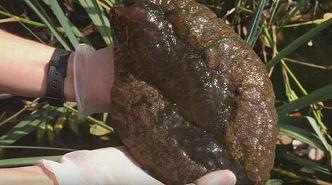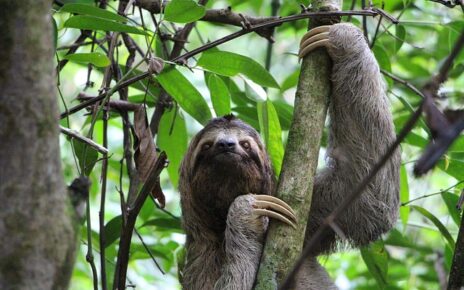Researchers have found a bizarre bumpy-looking blob in the biofiltration pond in Stanley Park in Vancouver, British Columbia. The discovery was made last month during BioBlitz event when several citizens and scientists visited Vancouver’s Stanley Park to see the type of wildlife dwelling in the park. Some researchers spent whole day in the park and eventually found this strange brownish green creature in the biofiltration pond in Lost Lagoon of the Stanley Park.
Maria Egerton, conservation programs manager at Stanley Park, reveals that this brain-like blob is not a single creature but a colony of thousands of identical organisms that bind together to create a gelatinous structure. The original member of the colony (a zooid) creates its clones through asexual reproduction (budding) and then an entire colony of these organisms is formed. These organisms produce a protein which helps in creating a slimy gelatinous structure to which all zooids are eventually attached.
According to researchers, this mass of jellylike green stuff—scientifically named as Pectinatella magnifica (bryozoan)—floats in freshwater pools. They sieve food particles out of water in freshwater reservoirs. They use their retractable lophophore to filter nutrients. They are difficult to be spotted due to their natural camouflage in the murky water. Sometimes, they also look like rocks or salamander eggs.
Fossils of ancient marine bryozoans discovered in the past suggest that these weird creatures existed even 470 million years back on Earth. Some studies suggest that species like P. magnifica most likely originated in Mississippi River, and later migrated to other water bodies.
Bryozoans have earlier been found across North America, but this is the first time that this gooey mass has been found in the Stanley Park. Only one science journal discusses about an earlier spotting of bryozoans in British Columbia. In recent times, a bryozoan was also seen in Lake Okanagan.
The biofiltration pond in the Stanley Park was created in 1990s to filter the pollutants in the runoff from the causeway. This pond is an ideal habitat for bryozoans as it has almost no current and is rich in nutrients.
During the Bio-Blitz event, researchers also found a goblin moss that appears like an old moss but emits green light. The detailed findings of the Bio-Blast event will soon be posted on the iNaturalist.org website.

